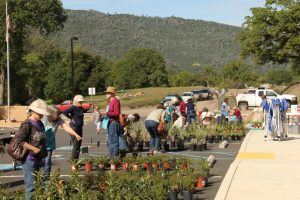Why Did My Seeds Fail?
First week, nothing. Two weeks – still just brown soil. Three weeks later, germination did not happen and the soil is beginning to smell and change color. Why did my seeds fail?
Seed starting indoors is the salvation for gardeners experiencing cabin fever after a long winter. Choose seeds that create plants that thrive in your area. Start with clean materials; soil from your garden may contain bacteria, molds and fungus that can affect your young seedlings. Pots should be washed in a 10% bleach and water solution. Seeds have a shelf life, especially if they are not saved in a cool place. So, the starting point is good soil, good seeds, and clean containers. Then, the seed packet gives clear instructions on planting times, locations, seed depth, and spacing.
Temperature is key to germination. If the temperature is too cold, either in the ground or under lights, plants will grow unevenly or not at all. Seeds may try to germinate at lower temperatures but will either rot before seed leaves develop or growth will be weak and spindly. Gardeners often rush to plant outside but in waiting they will have plants that surpass those planted in the cold. Planting indoors requires a heat mat set at 75 to 80 degrees. Seeds sown outdoors should wait until night time temperatures reach 60 degrees. Some seeds like peppers like it hot and are best started indoors with a heat mat set to 80 degrees. Pepper seeds may take between seven to thirty days to germinate or even longer (ghost peppers can take up to four months to germinate!)
Although planting in cold soil and planting too deeply are the major reasons seeds fail to germinate, there are other reasons also. The use of chemical fertilizers or fresh, hot manure will burn seeds. When you plant your seeds always press the soil down to tighten, giving the seed closer contact with the soil.
Watering in extremes will stop germination. Keep the soil moist, but not wet. Learn to feel the weight of the container to use as a guide. Wet soil is heavy. Use room temperature water, not cold.
Sometimes seeds become old or lose viability. Seeds should be stored in a cool, dry place. To test whether seeds can still germinate, wrap 10 to 20 seeds in a moist paper towel in a plastic bag in a warm spot. In a week count the number of germinated seeds. If there’s a less than 50% germination rate, consider purchasing new seeds.
Seeds planted directly into the garden might be stopped by your wild neighbors. Birds, squirrels, rodents, pet chickens, skunks, and possums all enjoy seeds. Protecting your seeds or starting them indoors might be the only way to stop the thieves.
Seeds that do germinate, and then grow only to fall over, are victims of damping off disease. Too much water, poor soil quality, or poor air circulation gives damping off its foothold.
If you are looking for seeds to start, the Seed Library in the Tuolumne County Public Library at 480 Greenley Road in Sonora is open on Saturdays from 10:00 to 1:00.
Julie Silva is a University of California Cooperative Extension Master Gardener of Tuolumne County. UCCE Master Gardeners of Tuolumne County can answer home gardening questions. Call 209-533-5912 or go to: http://ucanr.edu/survey/survey.cfm?surveynumber=7269 to fill out our easy-to-use problem questionnaire. Check out our website at: http://cecentralsierra.ucanr.edu/Master_Gardeners/ You can also find us on Facebook.
Or pick up the local Master Gardener book “Sharing the Knowledge: Gardening in the Mother Lode” at Mountain Books or the UCCE Office both in Sonora, CA.

